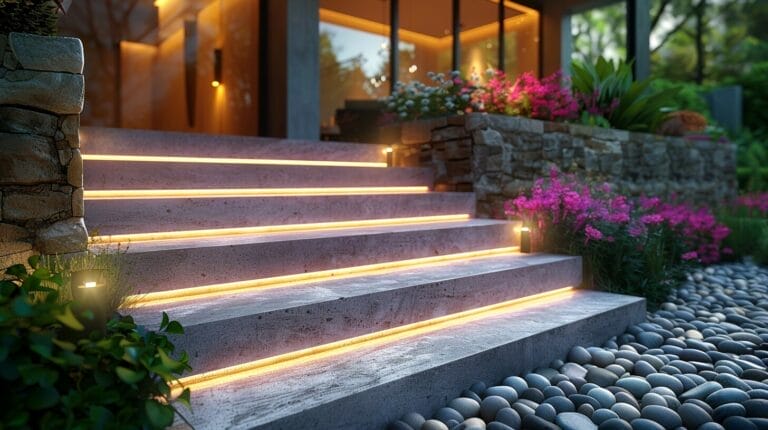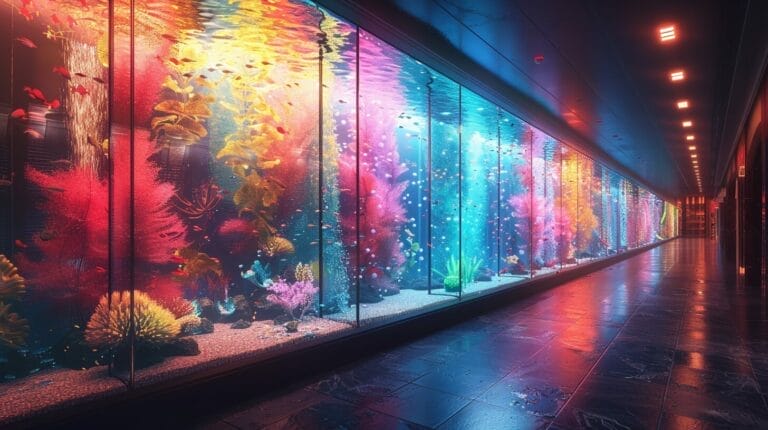Fluorescent Tube Lumens Chart: Your Guide to Types and Sizes
Navigating the world of lighting can sometimes feel like finding your way through a labyrinth in the dark. We’re here to shed some light on the subject, specifically focusing on fluorescent tubes. It’s not just about the size or type of the tube—it’s also about the lumens, a measure of the total amount of visible light emitted.
With the help of a fluorescent tube lumens chart, you can make more informed decisions about the best lighting solutions for your needs. Stick with us as we illuminate the details of this handy tool and enlighten your understanding of how lighting works.
Key Takeaways
- Fluorescent tubes are a versatile and energy-efficient lighting solution for various spaces.
- Lumens, not watts, should be used to determine a light’s brightness.
- Different types and sizes of fluorescent tubes offer varying lumen outputs for different lighting needs.
- Factors such as space, application, color temperature, and energy efficiency should be considered when choosing the right fluorescent tube.
Understanding Fluorescent Tubes and Their Applications

Diving into the world of fluorescent tubes, we discover their unique advantages and diverse applications. From providing general light in homes and offices to energy-efficient task and accent lighting, these innovative solutions offer more than just illumination. They reduce our carbon footprint significantly, a major benefit in our increasingly eco-conscious world.
Fluorescent tubes are versatile. For instance, T8 fluorescent tubes are ideal for general lighting in homes and offices, offering bright, consistent light perfect for workspaces or living areas. However, there’s more to fluorescent lighting than just general illumination. T5 fluorescent tubes are perfect for task and accent lighting, focusing light on specific areas such as kitchen countertops or display shelves.
In essence, whether for general, task, or accent lighting, there’s a type and size of fluorescent tube just right for your needs.
Exploring the Importance of Lumens in Lighting
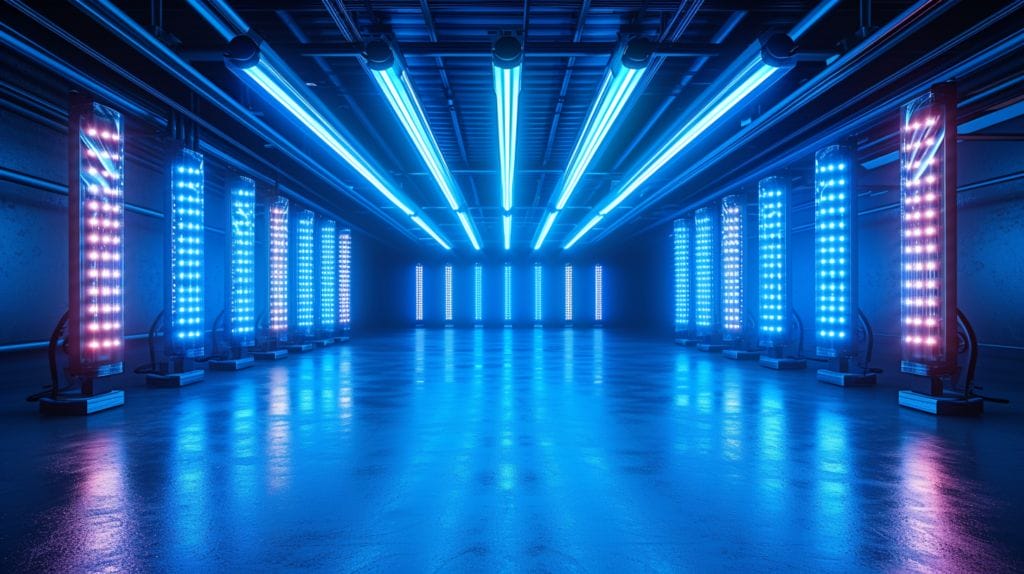
As we delve into lumens, it’s crucial to understand that this measure, not watts, truly determines a light’s brightness. Lumens provide a more accurate measure of how much light a bulb produces, revolutionizing the way we perceive and use lights.
Understanding the importance of lumens becomes easier when related to energy efficiency. While watts measure energy consumption, lumens gauge the actual light output. A fluorescent tube lumens chart serves as an invaluable guide in this aspect, helping to select the right bulb according to the desired brightness and energy efficiency.
The chart, detailing types and sizes, helps us to compare different lighting options accurately. It is especially useful for fluorescent tubes, given their wide range of sizes and brightness levels. Lumens have thus become a beacon of light in our quest for better, more efficient lighting solutions.
Different Types of Fluorescent Tubes and Their Lumens

Let’s now explore the different types of fluorescent tubes and their respective lumen outputs to better understand how they cater to varying lighting needs. Our fluorescent tube lumens chart will be your guide through the complex world of lighting technology.
Firstly, let’s discuss the T8 fluorescent tubes. These tubes are popular for their high lumen output, providing bright, general lighting that can illuminate large spaces effectively. What’s more, they offer energy-efficient options with varying lumen levels, allowing for a more tailored approach to lighting solutions.
Next, we’ve the versatile T5 fluorescent tubes. These tubes have different lumen outputs, making them suitable for task lighting and accent lighting needs. They’re a favorite in spaces where specific lighting intensity is required, providing the perfect balance between brightness and energy efficiency.
Factors to Consider When Choosing the Right Fluorescent Tube
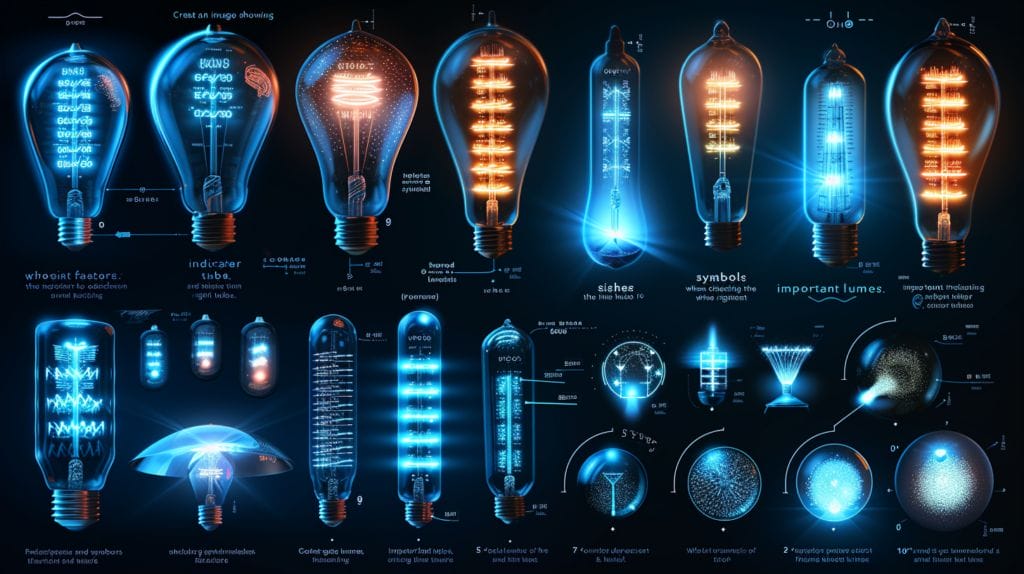
When choosing the right fluorescent tube, key factors such as the space and its application, color temperature, and energy efficiency should be considered. These factors guide you in determining the proper types and sizes of fluorescent tubes that best fit your needs.
The space and its application dictate the amount of light required. Color temperature, on the other hand, plays a significant role in setting the ambiance of the space. Energy efficiency must not be overlooked either—the initial cost might be higher for energy-efficient tubes, but the long-term savings on energy bills and the environmental impact make it a worthwhile investment.
Here’s a quick guide to help you visualize these factors:
| Factor | Consideration | Impact |
|---|---|---|
| Space and Application | Size and purpose of space | Determines tube size and lumens required |
| Color Temperature | Desired ambiance | Dictates the color of light |
| Energy Efficiency | Long-term savings and environmental impact | Influences initial cost and sustainability |
How Do Lumens and Battery Weight Affect Everyday Devices?
When looking for handy info for devices, it’s important to consider how lumens and battery weight can affect everyday use. Lumens impact the brightness of a device, while heavy batteries can make it cumbersome to carry around. Understanding these factors can help consumers make more informed choices.
Using a Fluorescent Tube Lumens Chart for Decision-Making
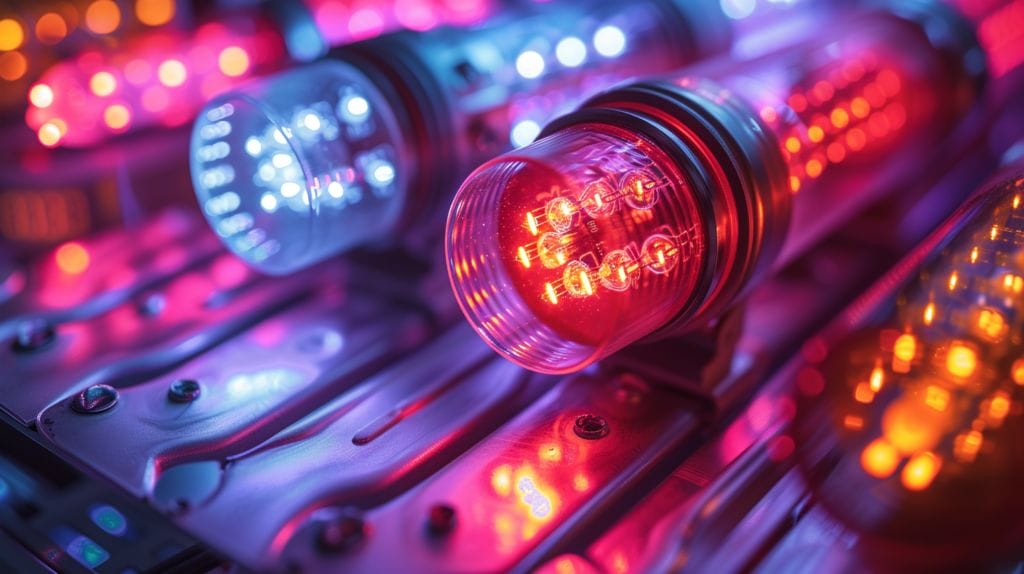
Navigatig a fluorescent tube lumens chart can significantly streamline your decision-making process when selecting the ideal lighting solution for your space. To use the chart, we first identify the fixture’s wattage, which directly impacts the light output. Each type and size of fluorescent tube has a specific lumens-per-watt ratio, indicating the amount of light produced for each unit of power consumed. The higher this ratio, the more energy-efficient the tube is.
Next, we consider the desired brightness level for our space. By cross-referencing the lumens-per-watt ratio with the total light output in lumens, we can determine which tube type and size will deliver the required brightness at the most efficient energy consumption level. This step ensures that the chosen tube will provide ample lighting without incurring unnecessary energy costs.
A fluorescent tube lumens chart is more than just a technical guide—it’s a tool for innovation, respecting the environment while meeting our needs.
Conclusion
We’ve explored the world of fluorescent tubes, emphasizing the importance of lumens. We’ve discussed different types and their respective lumens, and what to consider when choosing the right tube. Utilizing a fluorescent tube lumens chart can make your decision-making easier and more informed.
Remember, it’s not just about brightness, but also efficiency and suitability for your space. Light up your world the right way with the perfect fluorescent tube!
Frequently Asked Questions
What are fluorescent tube lumens?
Fluorescent tube lumens refer to the measurement of the total quantity of visible light emitted by a light source, generally measured in lumens per watt. It is an important criterion for gauging the brightness of fluorescent tubes.
Are there different types of fluorescent tubes available?
Yes, there are various types of fluorescent tubes available, such as T8 and T5 tubes. Each type has different sizes, wattages, and lumens output, making them suitable for different applications.
What is the difference between T8 and T5 fluorescent tubes?
T8 and T5 tubes differ in diameter, with T5 tubes being smaller in diameter compared to T8 tubes. T5 tubes are also more energy-efficient and typically have a higher lumen output per watt compared to T8 tubes.
Can I replace my older fluorescent tubes with LED tubes?
Yes, you can replace older fluorescent tubes with LED tubes. LED tubes offer excellent energy efficiency, longer lifespan, and better light quality, making them a popular choice for retrofitting existing fluorescent fixtures.
Do fluorescent tubes contain hazardous materials like mercury?
Yes, fluorescent tubes usually contain a small amount of mercury and should be properly disposed of to prevent environmental contamination. LED tubes, on the other hand, do not contain any hazardous materials.


